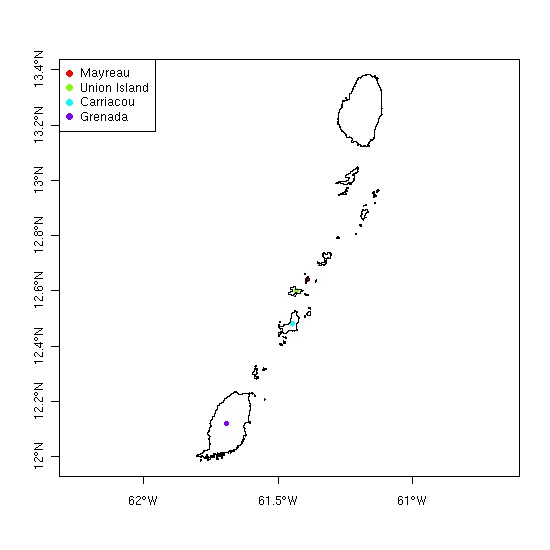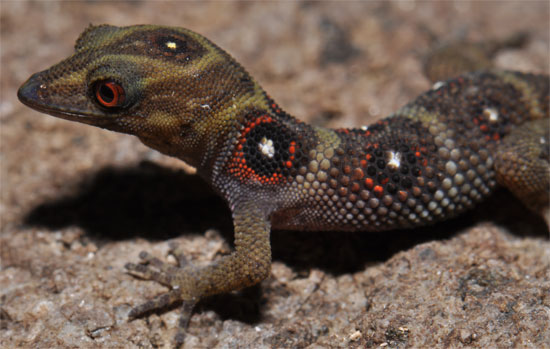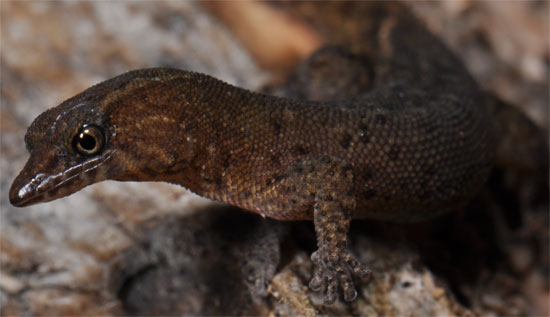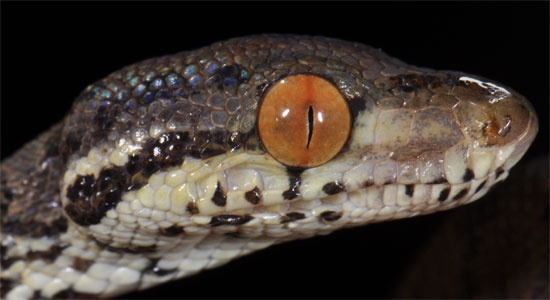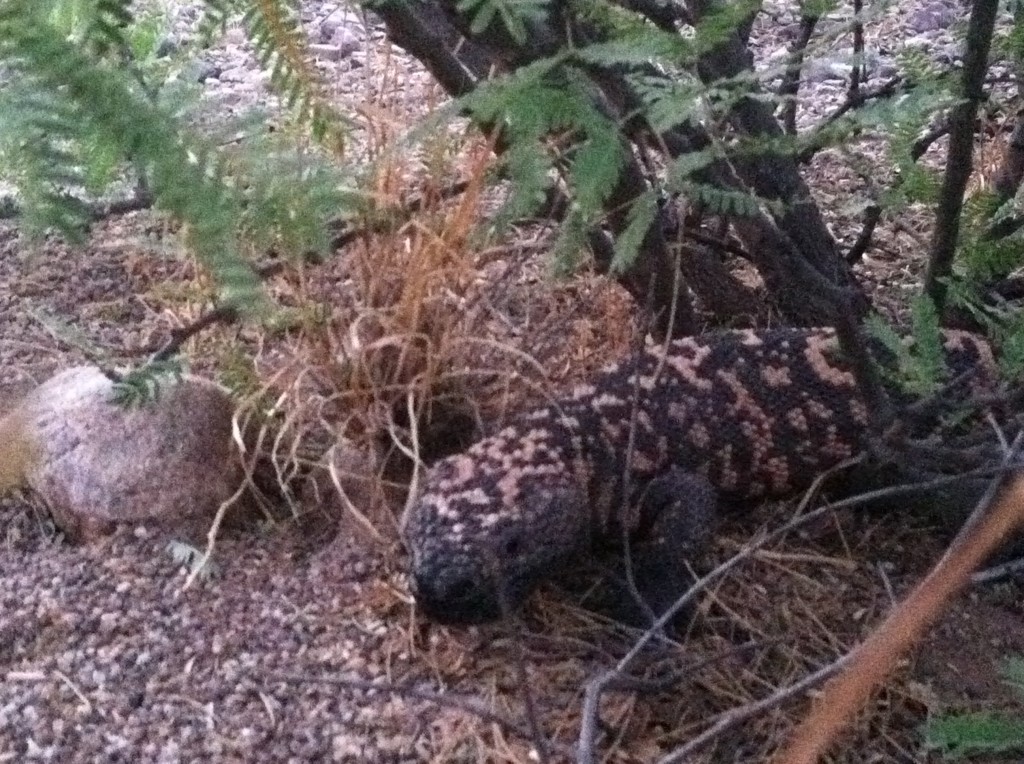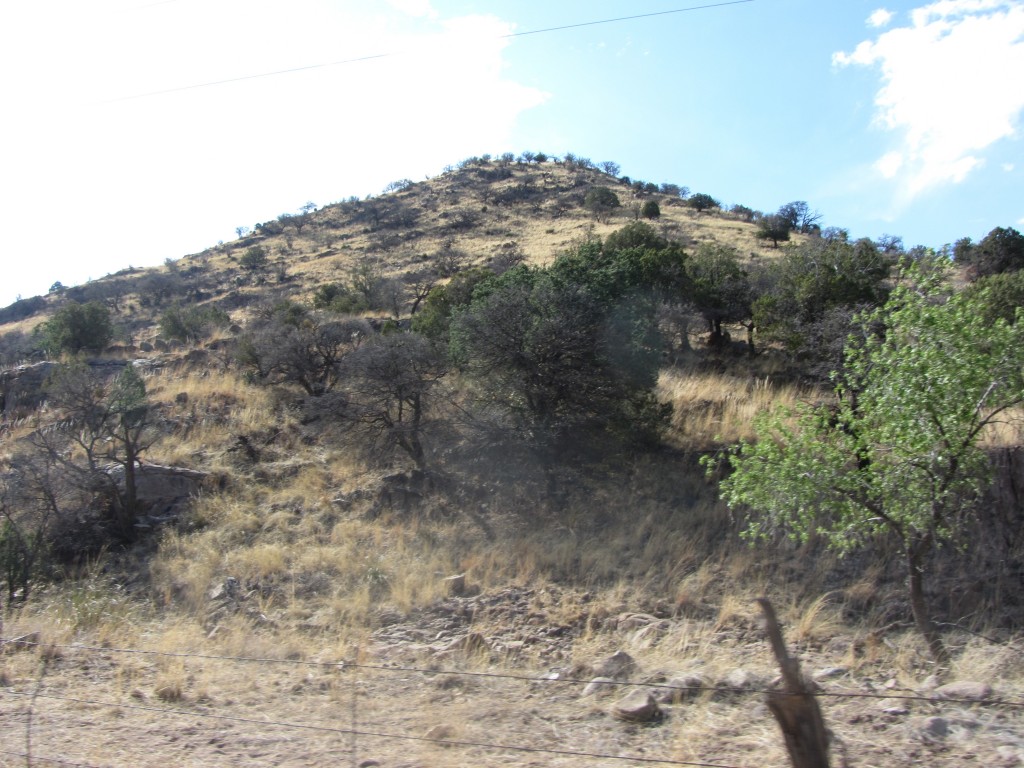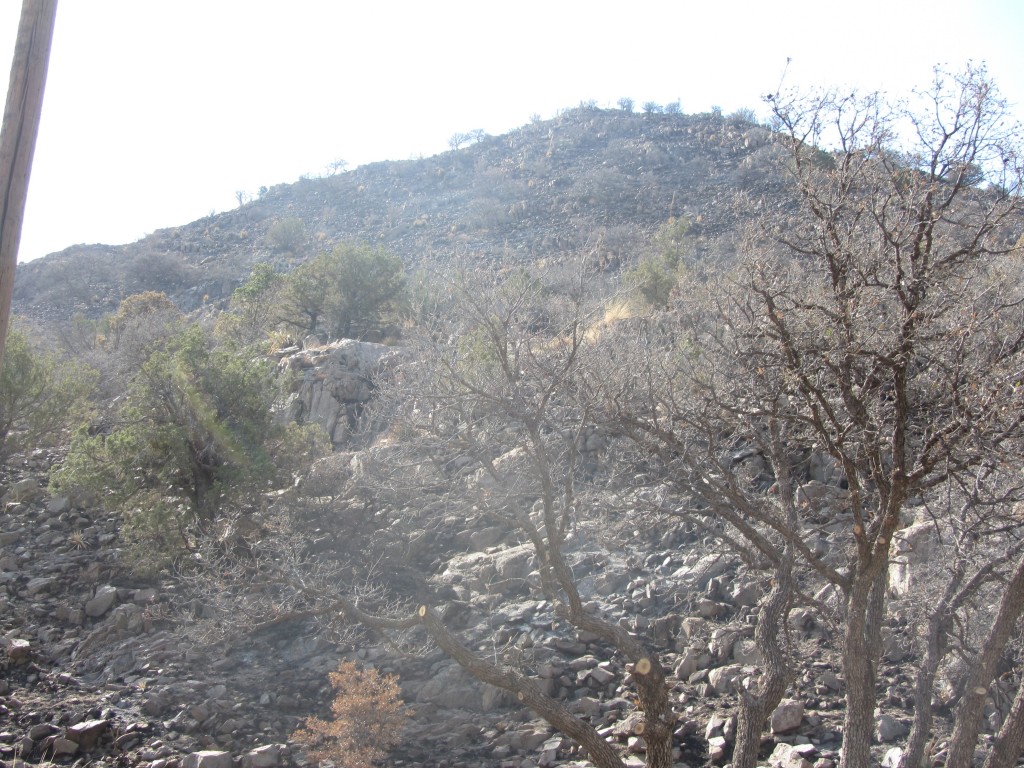Those of you who are out of town or who don’t normally enter Hutch through the plaza on the building’s east side may not yet have noticed the recent demolition of the brick colonnade extending out from the Computer Sciences building. Aficionados of brick interpretations of Greek and Neoclassical architectural embellishments may be the only ones disappointed by the loss of a structure that has done nothing but hinder foot traffic across to Baush & Lomb and the medical campus for years.
Bikes and Biology, July 29: Cichlid Macroecology
Announcing the Rediscovery of the Grenada Bank Blind Snake

Typhlops tasymicrus was previously known from two specimens collected on Grenada during 1968. Photo courtesy Mel José Rivera Rodríguez.
During June 2010 I found myself exploring the southern Caribbean (Trinidad, Tobago, Grenada, and the Grenadines) along with renowned West Indian herpetologists Robert Powell and Robert Henderson and a host of undergraduates working on a REU based on Union Island. My goal was to collect ecological data on Gonatodes daudini and Sphaerodactylus kirbyi, two sphaerodactylid geckos known only from the Grenadines (the strip of tiny islands between Grenada in the south and St. Vincent in the north).
A few hours after drinking “under the counters” (a high octane mix of over-proof rum and forest herbs/spices) on Grenada, we found ourselves on the steep slopes of Union Island, flipping surface cover at the only known locality for G. daudini in hopes of finding a sympatric population of S. kirbyi. After several minutes of meticulously picking through leaf litter and turning over downed trees and rocks, I flipped a large, flat rock to uncover a thick-bodied blind snake in the genus Typhlops. I showed the snake to Henderson and Powell. The excitement was palpable – if it wasn’t a new species, it was a snake that hadn’t been seen alive in over 40 years and is known from two specimens collected on Grenada.
It turns out the snake’s identity is Typhlops tasymicrus, which is the species known only from two specimens collected on Grenada during 1968. Some of the REU students went on to find additional specimens of this species in the same forested area, and our paper announcing the rediscovery of this species was published in the June 2011 edition of the Journal of Herpetology. Photos of other species found during the expedition follow below.
Rochester Students Sweep SSAR Awards
 Two Rochester EEB students were recognized by the Society for the Study of Amphibians and Reptiles (SSAR) for outstanding research presentations at the Joint Meetings of Ichthyologists and Herpetologists (JMIH). Dan Scantlebury won the Henri Seibert Award in Evolution/Systematics for his presentation on “Patterns of adaptive radiation in West Indian dwarf geckos (Sphaerodactylidae: Sphaerodactylus).” Anthony Geneva’s poster on “A multi-locus molecular phylogeny of distichoid anoles” won best poster in the Evolution, Genetics, & Systematics category. Congrats to Dan and Anthony!
Two Rochester EEB students were recognized by the Society for the Study of Amphibians and Reptiles (SSAR) for outstanding research presentations at the Joint Meetings of Ichthyologists and Herpetologists (JMIH). Dan Scantlebury won the Henri Seibert Award in Evolution/Systematics for his presentation on “Patterns of adaptive radiation in West Indian dwarf geckos (Sphaerodactylidae: Sphaerodactylus).” Anthony Geneva’s poster on “A multi-locus molecular phylogeny of distichoid anoles” won best poster in the Evolution, Genetics, & Systematics category. Congrats to Dan and Anthony!
Glor Lab Posters at JMIH

Shea Lambert with his poster on the ricordii species group (top) and Anthony Geneva discussing his poster on the distichus species group with Kevin DeQueiroz and Dave Weisrock (bottom).
During yesterday afternoon’s poster session at the Joint Meeting of Ichthyologists and Herpetologists (JMIH), Glor Lab post-graduate researcher Shea Lambert and PhD student Anthony Geneva presented results from their ongoing multilocus phylogenetic analyses of Hispaniola anoles. Congratulations to Shea and Anthony for a job well done!
ESDM Reading Group
Next Tuesday (7/12) we will discuss chapter 2 (Male and Female Heterogamety: 2-Factor Systems) and chapter 3 (Multiple-Factor Systems) of Jim Bull’s book, Evolution of Sex Determining Mechanisms. We will meet in Hutch. 316 at 12:30pm. All are welcome!
Next up… Bull
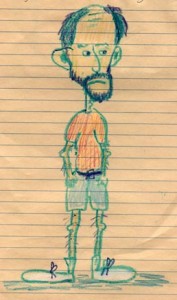 We wrapped up our read of Gillespie (highlights to come in a future post) today and decided to roll right into the next book. Starting next Tuesday (at 12:30 in Hutch 316) we’ll read Jim Bull’s 1993 book, Evolution of Sex Determining Mechanisms.
We wrapped up our read of Gillespie (highlights to come in a future post) today and decided to roll right into the next book. Starting next Tuesday (at 12:30 in Hutch 316) we’ll read Jim Bull’s 1993 book, Evolution of Sex Determining Mechanisms.
This one is a little hard to get your hands on, let me know if you can’t track a copy down. We’ll start off with the Introductory chapter (pages 3-10) and decide on an plan for divvying up the rest of the book on Tuesday. As usual, all are welcome.
Justin Ramsey on Beech-Maple Forests
Justin Ramsey will give a talk entitled “Stand structure and ground flora of old-growth Beech-Maple forests: physiography, exotic invasion, and agricultural legacy” Monday at noon in Hutchison 316.
Desert Plant Succession and Fire-con’t
Bob Minckley and amigos relocated and resampled all the vegetation plots in Mexico that had been established in 2000. Some of the plots, especially those that are near water, have changed considerably.
Towards the end of the trip, a few individuals of Colorado River Toad (Bufo alvarius) and Gila Monster (Heloderma suspectum) were out in anticipation of the rainy season.
The Horseshoe fire in the Chiricahua Mountains burns on and the worst part of it will be when the rains begin and there is no vegetation to slow the water and the soil suspended in it. Here are some pictures from El Coronado Ranch on the east side of the Chiricahua Mountains in east Turkey Creek Canyon. It is remarkable to see how variable fires can be. In some areas the understory grasses and shrubs burn and most trees appear to live and in other nearby areas everything burns.
The hillside below was a hot spot, as you can tell by comparing the two pictures taken two weeks apart.
Miss USA Supports Evolution
I’m happy to report that the new Miss USA is “a huge science geek” who believes in the “big bang theory and, you know, the evolution of humans, you know, throughout, you know, time.”
http://www.youtube.com/watch?v=oYVkIJl5yTs&feature=player_embedded
Look, I realize that she’s no wordsmith, but she sounds like genius relative to her competitors.
http://www.youtube.com/watch?v=gofckdVB2fU&feature=player_embedded



